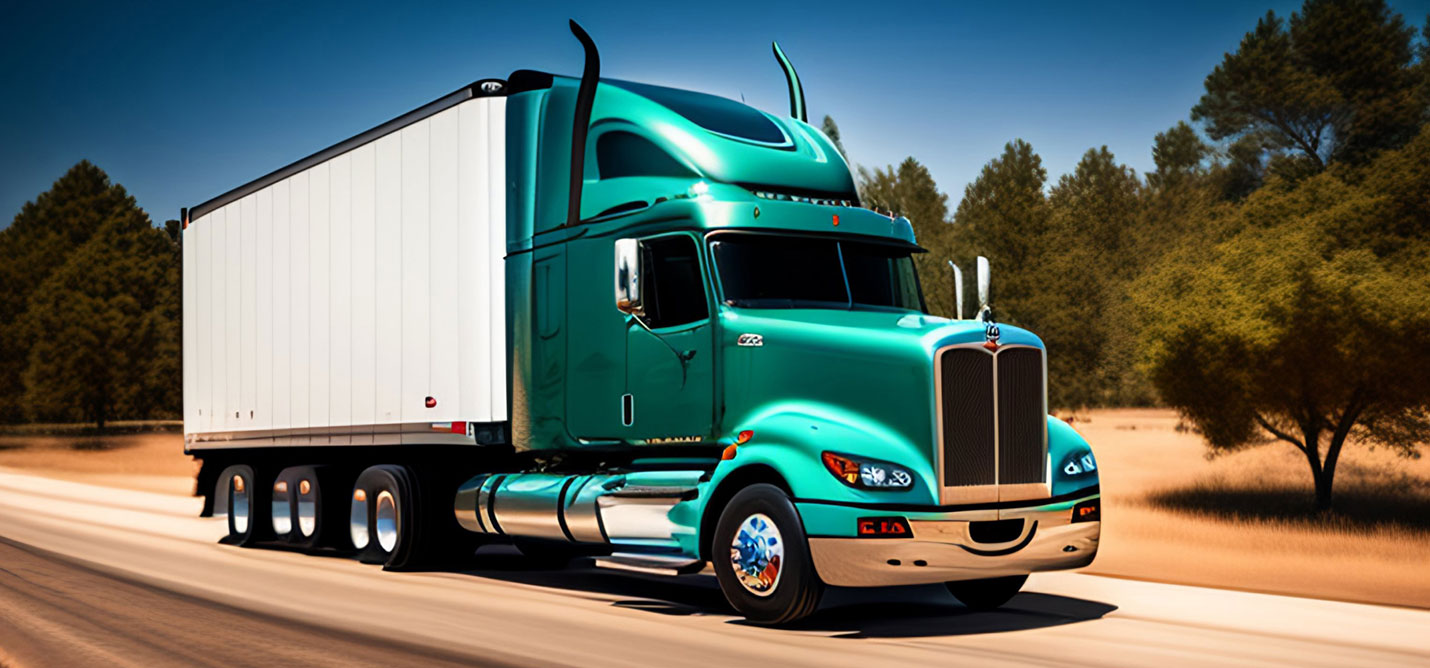

Mastering Last-Mile Delivery: A New Era in Logistics
I still remember a crisp autumn morning in London when I witnessed a small courier deftly maneuver through bustling streets, ensuring a critical package reached its destination on time. That moment reshaped my view on how last-mile delivery could transform daily operations in the logistics world. Today, with the right blend of strategy and technology, mastering last-mile delivery is not just an aspiration—it’s a tangible achievement. In this guide, we’ll explore actionable insights, innovative techniques, and real-life examples that speak volumes about the evolution of last-mile delivery.
Join us as we navigate through the nuances of the final leg of freight movement, with every detail backed by industry experts like those at the GlobalBridgeFreight official website, ensuring every claim stands on solid ground.
Navigating the Last-Mile Labyrinth
Last-mile delivery has become the linchpin of modern logistics. When a package nears its final destination, every minute counts. Imagine a bustling city like New York or a remote suburb in Asia—each environment demands a tailored approach. Over the years, industry leaders such as Supply Chain Dive and Logistics Management have illustrated how nuanced local challenges call for inventive solutions.
In my early career, I observed firsthand how a slight delay in delivery could ripple into customer dissatisfaction. It was a moment that made me appreciate efficient logistics and the importance of adapting strategies to local conditions. Bold innovation coupled with practical technology solutions has set the stage for a dramatic shift in how businesses view the final stage of delivery.
Consider these key observations:
- Urban versus rural challenges: Urban areas face congestion and parking issues, while rural zones struggle with longer distances.
- Technology adoption: Modern tracking systems and route optimization tools significantly cut down delivery times.
- Customer expectations: With the rise of e-commerce, expectations for speed and reliability have skyrocketed.
Every step taken to refine last-mile operations not only boosts operational performance but also builds trust among customers. It’s a journey where each minor improvement contributes to a larger, well-oiled system.
Innovative Approaches in Last-Mile Logistics
Modern logistics has shifted its focus to bold, practical strategies. Here, the goal is to blend on-ground experience with robust technology. For example, companies are now using advanced data analytics to predict delivery patterns and optimize routes, ensuring that every mile traveled is as efficient as possible.
Key Components in Last-Mile Success:
- Smart Routing Systems: Utilizing real-time data, these systems provide drivers with dynamic routing options, much like those offered by Transport Topics.
- Micro-Fulfillment Centers: Strategically placed hubs that reduce delivery time in densely populated regions.
- Alternative Delivery Methods: From locker drop-offs to crowd-sourced delivery options, the landscape is changing fast.
A personal memory that resonates with me is witnessing a driver using a tablet to adjust his route on the fly—a move that saved precious minutes and won him the appreciation of a delighted customer. This hands-on adaptation reflects the practical evolution of mastering last-mile delivery.
Table: Comparative Analysis of Last-Mile Strategies
| Strategy | Urban Efficiency | Rural Adaptability | Technology Integration |
|---|---|---|---|
| Smart Routing Systems | High due to real-time updates | Moderate; affected by connectivity | Bold, data-driven solutions |
| Micro-Fulfillment Centers | Very effective in congested areas | Less feasible; cost challenges | Leverages local distribution hubs |
| Alternative Delivery Methods | Popular for fast deliveries | Gaining traction with tailored models | Enhanced by crowd-sourced models |
This table offers a snapshot of the strategies that companies adopt to tackle the inherent challenges of the final mile.
The Future of Last-Mile Delivery
Looking ahead, the trajectory for mastering last-mile delivery is marked by continuous improvement and inventive practices. The integration of artificial intelligence, machine learning, and predictive analytics is set to redefine how businesses approach this vital segment.
What’s on the horizon?
- Automation and Drones: Unmanned aerial vehicles and automated delivery robots are beginning to see real-world applications in cities like those in the United States and Germany. Sources like Inbound Logistics highlight early successes in this field.
- Eco-friendly Solutions: With environmental concerns growing, logistics companies are exploring green alternatives—electric vehicles and sustainable packaging solutions are just the start.
- Enhanced Customer Communication: Real-time tracking and direct communication channels are making it easier for consumers to monitor their orders, ensuring transparency and satisfaction.
As businesses refine their practices, the future seems promising for those committed to mastering last-mile delivery. It is no longer about mere speed; it is about creating a seamless, innovative logistics experience that resonates with modern consumers.
Strategic Call-to-Action:
For companies looking to gain a competitive edge, now is the time to invest in smart logistics solutions. Visit GlobalBridgeFreight’s official website to discover how advanced systems and expert guidance can transform your delivery process.
Frequently Asked Questions
What is last-mile delivery, and why does it matter?
Last-mile delivery refers to the final step of moving goods from a distribution center to the end customer. It matters because this stage directly influences customer satisfaction and operational costs. The efficiency of mastering last-mile delivery can determine a company’s reputation in the market.
How do urban and rural last-mile challenges differ?
Urban areas benefit from advanced technology and multiple distribution hubs, whereas rural regions often require creative solutions due to long distances and lower connectivity. Each scenario demands a tailored approach to maintain efficient logistics.
What technologies are driving last-mile innovations?
Modern logistics leverages bold technologies like smart routing systems, real-time tracking, and even automated delivery robots. Such tools are reshaping how companies manage the final leg of their supply chain. Explore insights from Supply Chain Dive for more details.
Can automation fully replace human drivers in last-mile delivery?
Automation is making significant progress; however, human oversight remains crucial for handling unpredictable variables, such as weather and local traffic conditions. The blend of innovative tech and human expertise creates a robust system for mastering last-mile delivery.
How can companies reduce costs while improving delivery speed?
Cost reduction and speed improvement are achieved through smart investments in technology, optimized routing, and strategic placement of micro-fulfillment centers. Detailed case studies can be found on platforms like Logistics Management.
What role does customer feedback play in refining last-mile delivery?
Customer feedback is a valuable resource. It helps logistics companies identify bottlenecks and areas for improvement, ensuring that the last-mile delivery process continuously evolves to meet expectations.
Are there sustainable practices in last-mile delivery?
Absolutely. The industry is increasingly adopting eco-friendly vehicles and reducing packaging waste. Embracing green logistics is not only beneficial for the environment but also resonates with a growing eco-conscious customer base.
Key Takeaways
- Mastering Last-Mile Delivery is vital for boosting customer satisfaction and operational efficiency.
- Urban and rural environments demand unique, innovative logistics strategies.
- Technology integration,n such as smart routing and automation, is transforming the delivery landscape.
- Strategic investments in infrastructure and customer engagement drive success in the final mile.
- Bold, practical solutions are essential to keep pace with evolving market demands.
Additional Insights and Industry Perspectives
When I first encountered the challenges of last-mile delivery, it felt like trying to solve a giant jigsaw puzzleamidf a busy market street. The mixture of unpredictable traffic patterns, narrow alleyways, and varying customer needs made it a real-world classroom for logistics innovation. Over time, observing how companies harness advanced analytics and smart delivery systems has been nothing short of inspiring.
One expert remarked, “The future of logistics is defined by the finesse with which companies can manage the last stretch of their delivery network.” This statement, highlighted by professionals at Inbound Logistics, emphasizes the shift towards a more refined and customer-focused approach. It’s this blend of technology and on-ground agility that truly sets the stage for mastering last-mile delivery.
Practical Strategies to Consider:
- Adopt Real-Time Data Systems: Using real-time data can drastically reduce delays. Many companies have embraced this shift, as discussed on Transport Topics.
- Invest in Micro-Hubs: Establishing local centers can cut down the travel distance, enhancing delivery speed significantly.
- Enhance Driver Training: Empower your workforce with training on modern navigation and customer service.
- Monitor Performance Metrics: Constantly assess delivery times and customer feedback to refine processes.
Centralized Comparison of Global Last-Mile Delivery Approaches
Centralized Comparison of Global Last-Mile Delivery Approaches
| Region | Key Challenges | Innovative Solutions | Outcome |
|---|---|---|---|
| United Kingdom | Congestion in metropolitan areas | Implementation of micro-fulfillment centers and smart routing | Faster, reliable urban deliveries |
| United States | Diverse urban and rural delivery landscapes | Integration of real-time data and advanced tracking systems | Improved efficiency and customer satisfaction |
| Germany | Strict environmental and regulatory standards | Adoption of eco-friendly fleets and automated systems | Sustainable and compliant delivery models |
| Australia | Remote areas and long distances | Strategic distribution hubs and flexible scheduling | Optimized coverage across vast regions |
| Asia | High population density and diverse terrain | Utilization of crowd-sourced delivery options and digital apps | Enhanced adaptability and speed |
This table paints a clear picture of how various regions tackle the challenges of mastering last-mile delivery through tailored strategies and technology.
Final Thoughts
As the logistics landscape continues to evolve, the art of mastering last-mile delivery stands out as both a challenge and an opportunity. The combination of smart technology, practical strategies, and a willingness to adapt has created a fertile ground for innovation. Businesses that harness these techniques not only boost their operational performance but also secure lasting customer trust.
Are you ready to rethink your delivery process and unlock the next level of logistics efficiency? Consider how each decision, each strategy, and each technological upgrade can contribute to a smoother, faster, and more reliable delivery experience. The journey toward perfecting the final mile might be complex, but its rewards are immense.
Strategic Call-to-Action:
If you’re inspired to transform your delivery operations, connect with our experts at the GlobalBridgeFreight official website and begin your journey toward excellence in logistics.
Mastering last-mile delivery isn’t just about the last stretch—it’s about creating a ripple effect that touches every aspect of your business. With bold strategies, practical technology, and a customer-first approach, the future of logistics looks brighter than ever.


